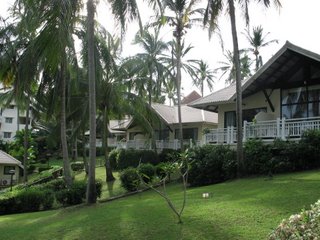These have been powered by normal 12 volt car/boat or deep cell batteries.
Obviously these need to be recharged from time to time. This is fine when you don’t have to carry them far.
But one fence is quite remote from a charging point and at the bottom of a steep hill. For this reason I use a deep cell battery here as it lasts considerably longer than the others. Deep cell batteries are very heavy.
Getting it back up the hill, even in a wheel barrow has become a chore. Because of the continual rain getting a vehicle down to the spot is impossible.
This particular fence keeps the cattle away from a possible creek crossing into the bush.
It’s not as though the cattle would ‘try’ the fence every day. They have a good memory of being zapped and normally keep away.
I have considered putting a permanent fence there but the terrain is difficult and the ‘escape’ factor only comes into play when the creek is extremely low which isn’t often these days. Plus the recent floods have made that part of the creek bank extremely steep which is also a deterrent.
So I’ve invested in a solar charged electric fence energiser to do away with portable battery power. It was easy to install on a star picket and is facing due north and should be in full sunlight for most of the day.
According to the blurb it should stay charging for up to 5 days of heavy cloud and takes three days to fully recharge its internal battery, if flat, in full sun.
It’s not as though the cattle would ‘try’ the fence every day. They have a good memory of being zapped and normally keep away.
I have considered putting a permanent fence there but the terrain is difficult and the ‘escape’ factor only comes into play when the creek is extremely low which isn’t often these days. Plus the recent floods have made that part of the creek bank extremely steep which is also a deterrent.
So I’ve invested in a solar charged electric fence energiser to do away with portable battery power. It was easy to install on a star picket and is facing due north and should be in full sunlight for most of the day.
According to the blurb it should stay charging for up to 5 days of heavy cloud and takes three days to fully recharge its internal battery, if flat, in full sun.
Outside our boundary fence on the road verge is a strip of land the gets covered in tall grass and weeds.
It belongs to two of our neighbours but they think it belongs to us and we should look after it better ie. keep it neat and tidy.
Anyway about once a year, in autumn, I spray the entire area off with herbicide.
This year blackberry bushes were very evident amongst the tall grass. This is a declared noxious weed in Australia and, by law, land owners are required to keep it under control.
Normally I use glyphosate on this area but have noticed over the years the blackberry there may have become a little resistant. So this year I used a combination of glyphosate and Metsulfuron-methyl with some added wetting agent.I have had a lot of successful with the latter on our property on both blackberry and bracken. It also works well on the difficult to control Tradescantia zebrina.
It’s fairly slow acting so don’t expect to see any visible results for a few weeks. The grasses on the other hand should start to ‘yellow’ in around 10 days.
Then we’ll have a nice dead brown verge for the next 6 months or so or until spring when dormant seeds currently in the soil will begin the process all over again.
Update:12th May
Success with grasses and weeds.
Blackberry is ‘lingering’ but signs of senescence at the growing tips.
But it’s early days yet for them.























No comments:
Post a Comment